Alaska, nicknamed the Last Frontier, is an inspiring state known for its beauty, glaciers, wildlife, northern lights, and much more. Wondering where to start when visiting Alaska? The drive from Anchorage to Seward Alaska offers an incredible trip that I know you will love.
Odds are that you want to know the best things to do and see while keeping a reasonable budget. We have you covered!
***Affiliate Links are sometimes used in many of our posts. As an Amazon Associate, and affiliate publisher for several companies, we earn a small commission from qualifying purchases and will be compensated if you make a purchase after clicking the links. Check out our Privacy Policy and Disclosures page for more information. Unless otherwise noted, all photos, designs, and graphics are original to The ExplorList.
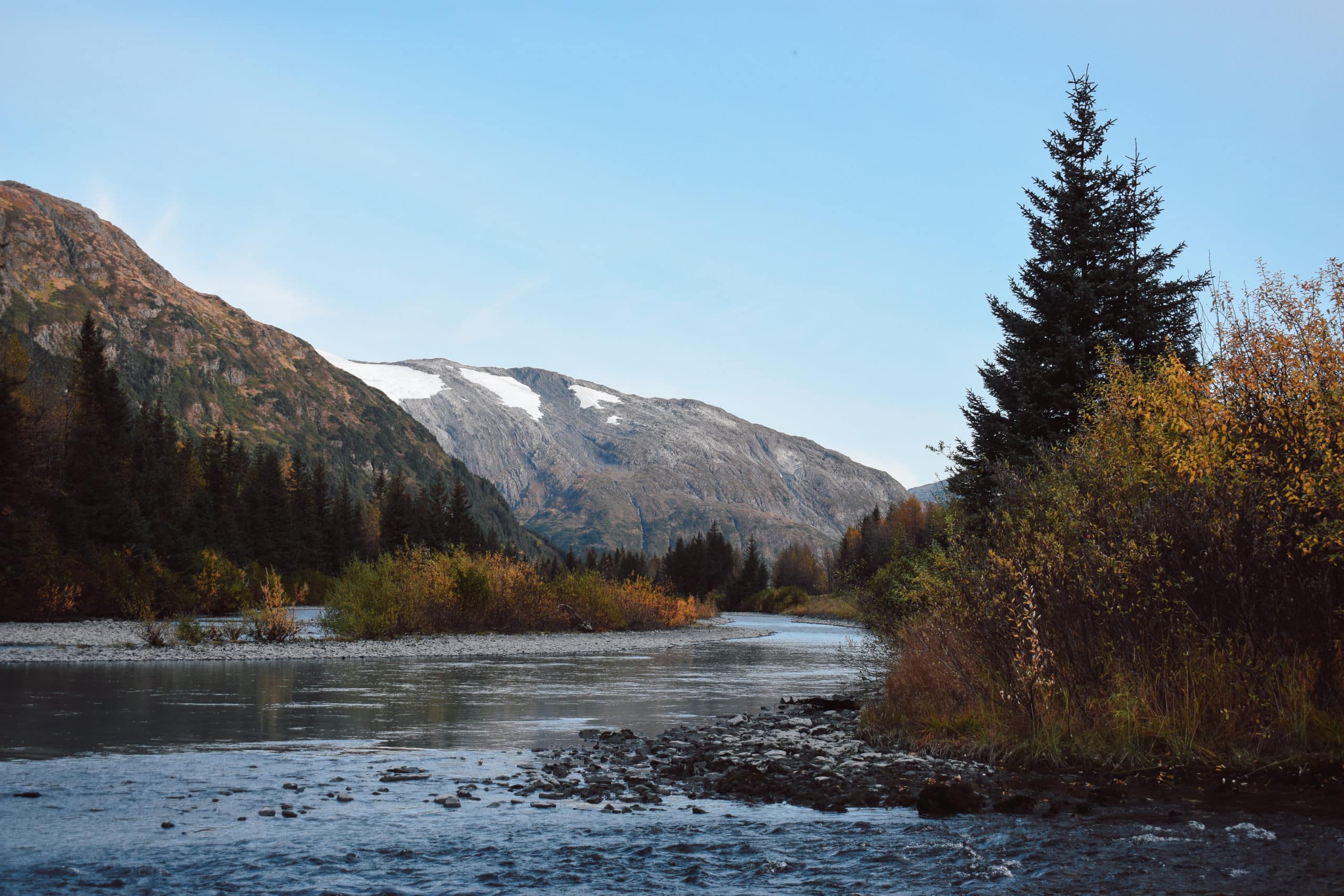
When to Go & How to Save Money
My husband and I planned this trip because of the inexpensive flights we were able to find. From Phoenix, we paid $622 for both of us to fly into Anchorage. It is tempting to visit Alaska in the summer, but prices will be high, and the crowds will distract from the serenity the area brings. I always recommend visiting places in the off-season.
If you don’t want to miss out on touristy attractions, be sure to go before October since a lot of the tours/cruises will close. We mainly came for the incredible landscape and low-cost adventures. To save even more, I recommend finding stays on Airbnb. In total, we spent $273 on our lodging. Making the trip just over $1,000 for two. Additional costs to account for would be the rental car, gas, food/fun.
Now that we have some ways to save money on your trip… let’s get started! Below we have outlined the best things to do from Anchorage to Seward, Alaska. It truly is an unforgettable trip!
Drive from Anchorage to Seward Alaska
Day 1: (Arrival, Beluga Point, Moose Lake, Cabin in Seward Alaska)
Arrival
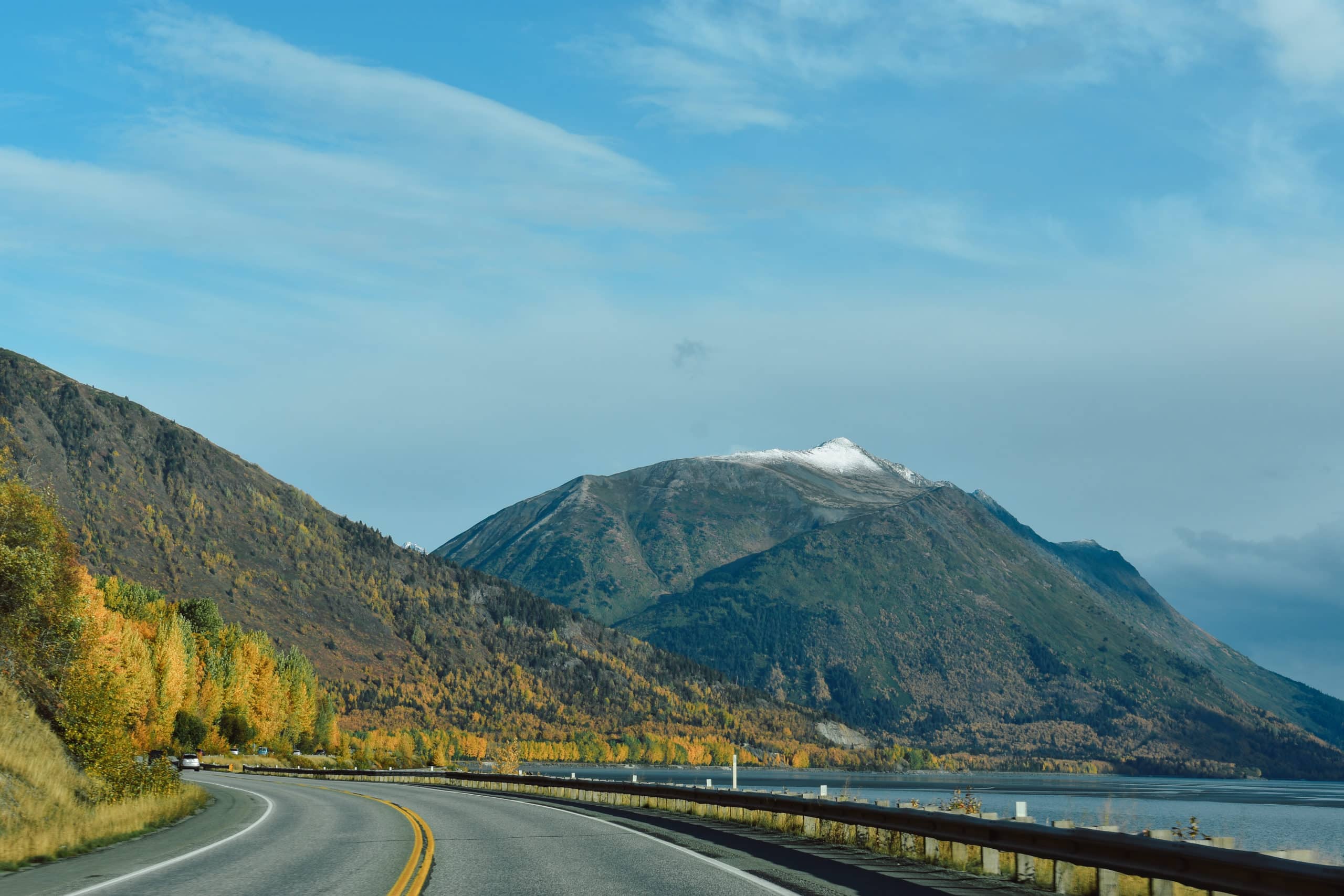
From Anchorage airport, find your rental car and begin your journey! We decided to stop at a local grocery store to save money on some food and snacks. This is also a great opportunity if you forgot any gear. After a little bit of shopping, head south to Seward Highway.
Today you will start the drive from Anchorage to Seward along Turnagain Arm, making a couple of stops, as you head to your stay in Seward Alaska.
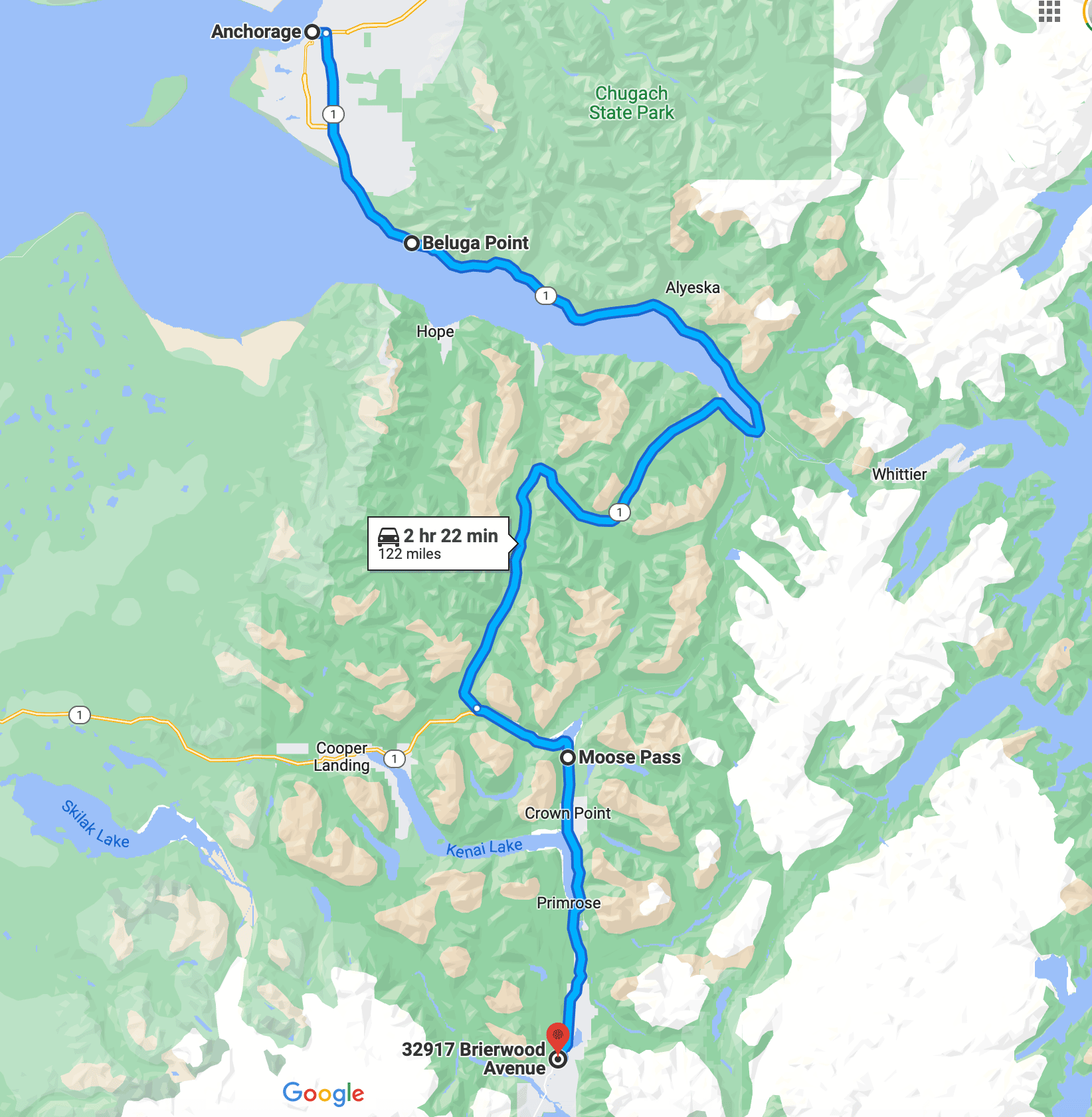
Turnagain Arm
Seward Highway hugs the dramatic shorelines of the Turnagain Arm waterway. As you drive, Turnagain Arm will be on your right, and the Chugach State Park mountains on your left.
This is one of the most scenic highways in America. The dramatic mountains, fall leaves, and wide span of water made this drive its own attraction!
Due to the tide, Turnagain Arm can turn into four miles of sand flats. James Cook made a voyage in 1778, and the arm got its name because he was forced to “turn again” when the waterway didn’t travel through the continent.
A unique sight that occurs in the arm is the bore tide, this wave of water rushes down the arm and can be 6 feet tall! Created by the area’s large tidal range, it can be as fast as 20 mph! It attracts adventurers and local surfers.
When the tide is out, it is strongly advised to not walk out on the flats. The area can be dangerous because of the quick tide.
Check tide charts beforehand, so you can experience the tide prepared. You may even see a Beluga Whale riding the wave!
Beluga Point
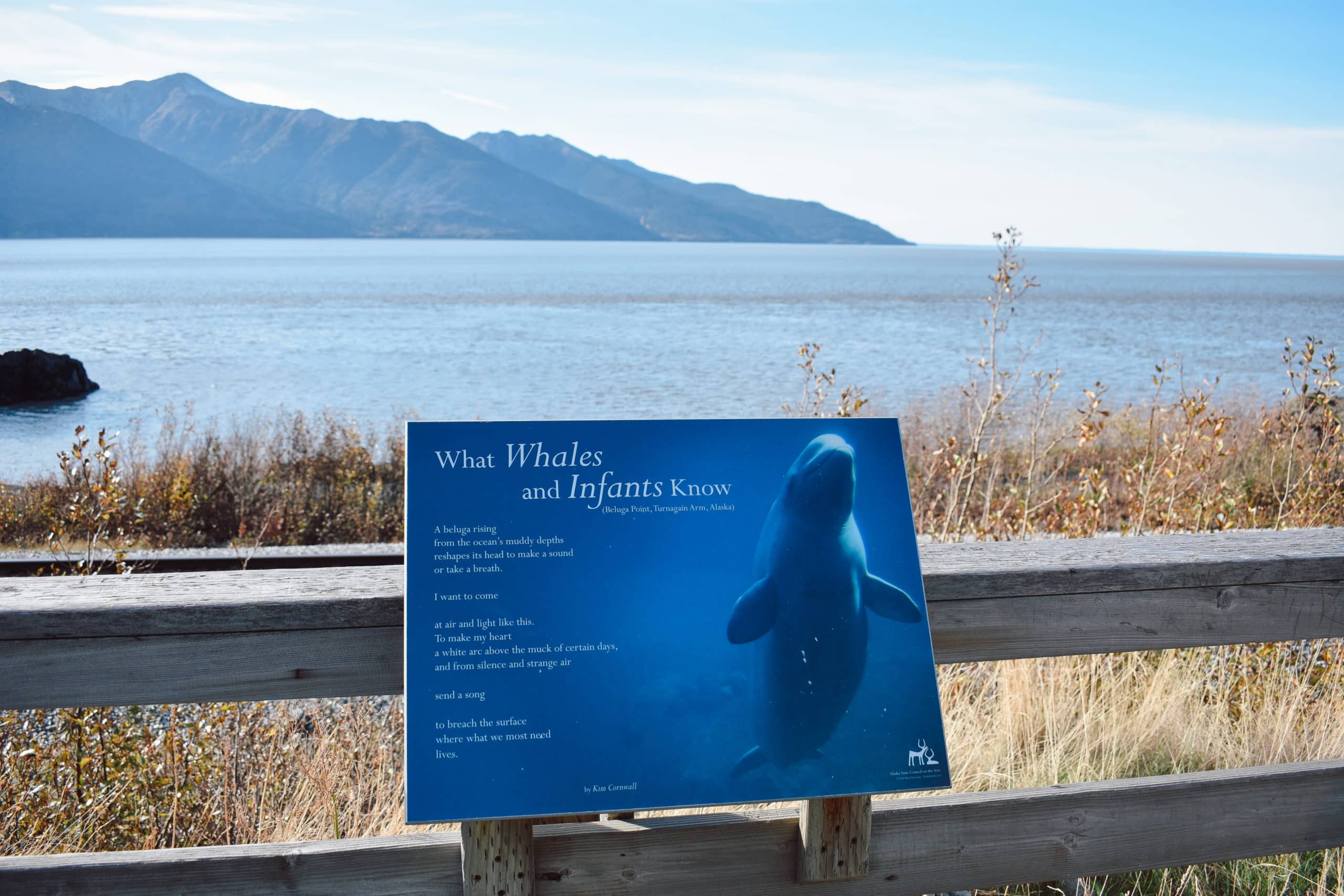
As you drive along Seward Highway, take a stop at Beluga Point for a unique experience whale watching. Beluga Point is a rocky outpost along Turnagain Arm, where it is common to see Beluga whales (best from mid-July-August).
Belugas are beautiful white whales that measure a little less than 16ft long. They are both predator and prey. As you watch, you may catch a glance at the black fin of an orca in pursuit of the belugas.
Since we visited in October, it was less likely to see the whales, but we still had a great time viewing the water and spotting some Dall Sheep on the mountains across the street. There are many more stops along the Turnagain Arm to view belugas, as well as the mouth of the Kenai River. Enjoy the incredible views and stop wherever you feel inspired.
Moose Pass
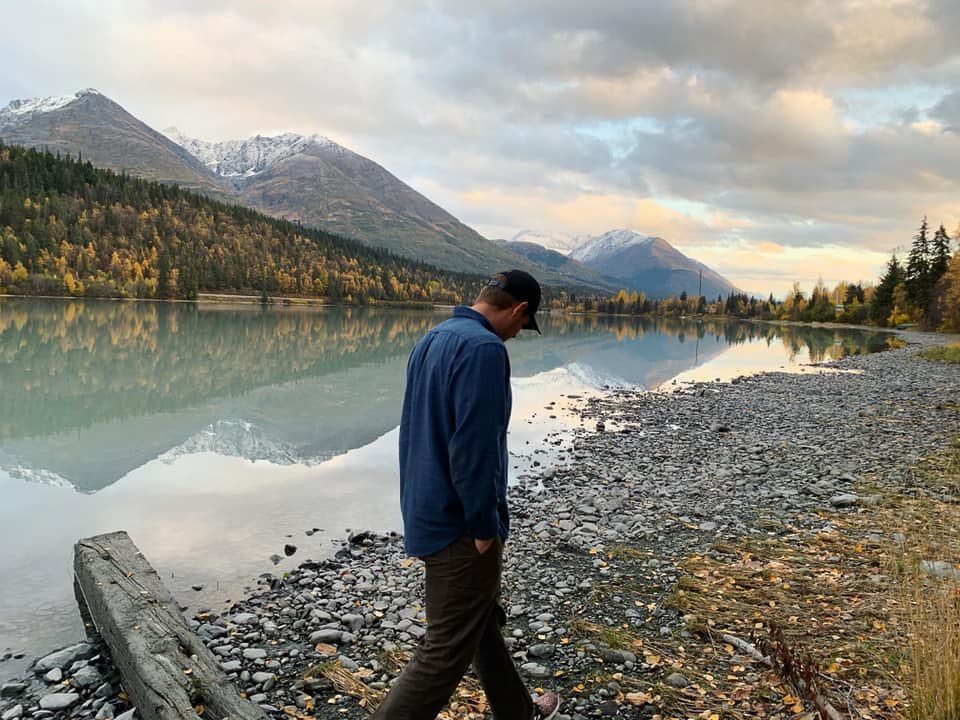
Next up on the drive from Anchorage to Seward is a spontaneous stop at Moose Pass.
I highly recommend getting out of the car to see these majestic mountains reflecting on the lake. Bald Eagles are known to be in the area so keep a watchful eye!
This scenic spot can be accessed through many pull-off sights. It is a great stop for a picnic or to stretch your legs and walk around the lake. When I first got out of the car and walked through the trees, I was not expecting to be hit with such beauty. There was a certain stillness in the air and I felt such peace at this location.
Hiking is popular in the area in the surrounding Chugach National Forest, and there are many trails to choose from.
Also, if you visit in June, the town’s lively Summer Solstice Festival is a two-day event hosted by the town, on June 21, celebrating the longest day in the year. We stayed for about 30 minutes and then continued our journey to Seward.
Cabin in Seward Alaska
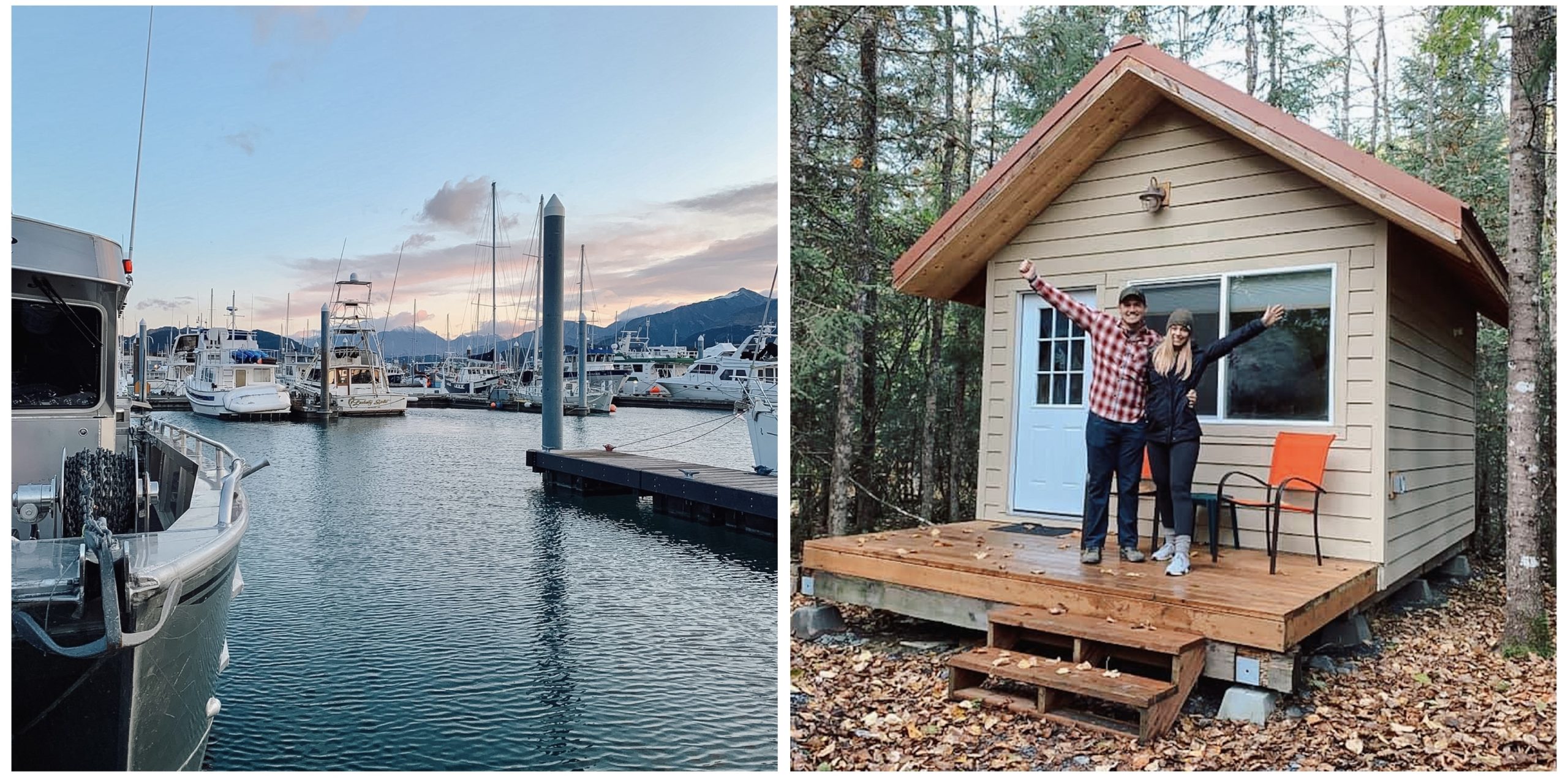
From the airport, the drive from Anchorage to Seward is a 2 hr and 20-minute drive.
With the stops, I would plan at least 3 hours to arrive at your stay in Seward.
We planned our trip to be as cost-effective as possible, and found this cabin Airbnb to be a slight splurge, and so worth it! During the peak season, this rental is $175.00 a night plus fees. Since we visited in October, our total came to around $94.00 a night. To access this rental from Airbnb, check out the link here.
The cabin has a studio design with a large comfy bed, heater, and cooking supplies. It was a perfect pit stop and just 7 miles from downtown Seward.
We had a fantastic stay and were glad to experience a cabin in the forest while in Alaska. We spent our first night here and planned our other two nights in Anchorage. Based on your trip, you can spend more time in the Seward area before heading back to Anchorage!
For top restaurants in Seward click here.
Day 2: (Seward Alaska, Exit Glacier, Byron Glacier, Alaska Wildlife Conservation Center)
Seward Alaska
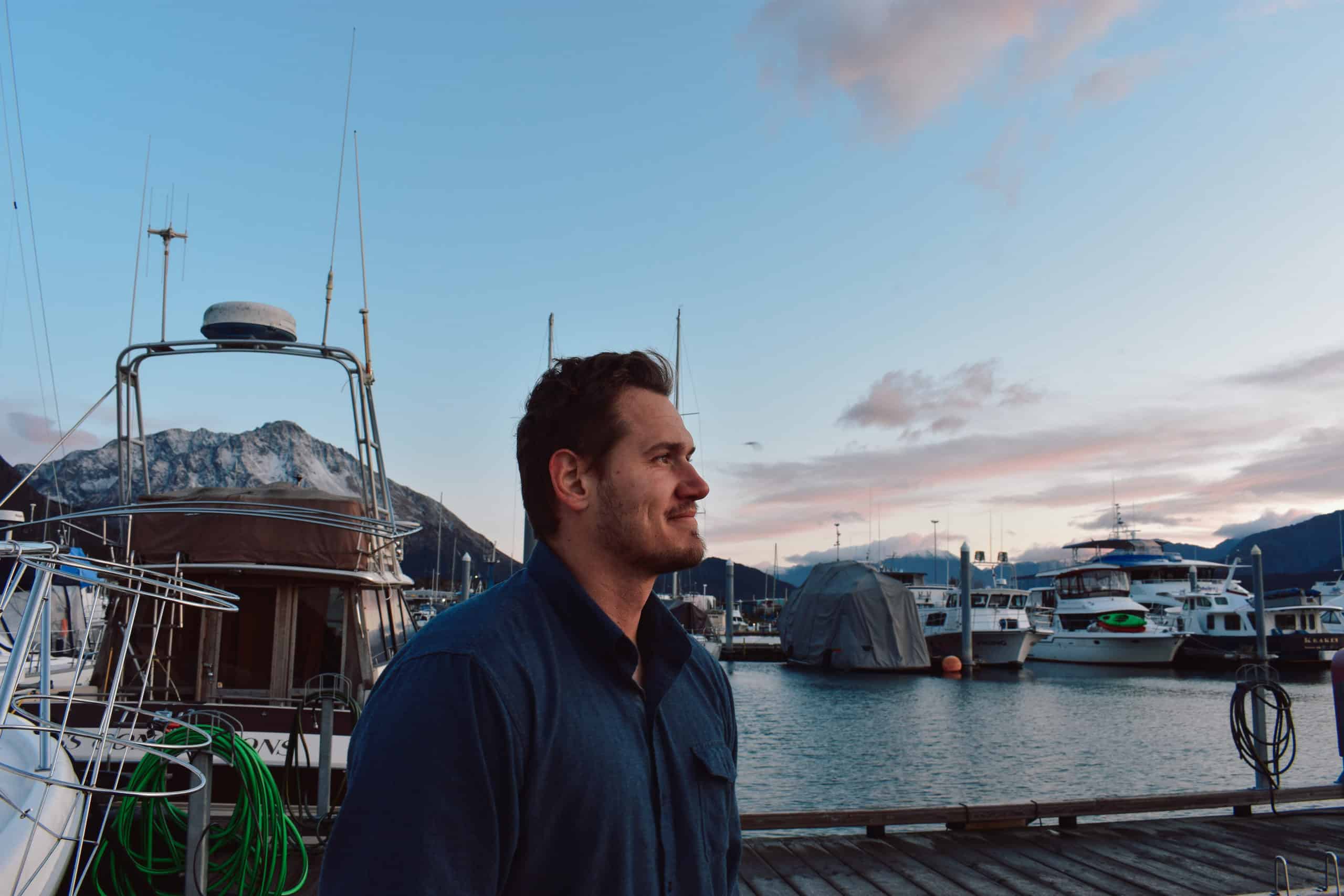
In the morning, take some time exploring the beauty that is Seward. A port city in southern Alaska, Seward is the gateway to Kenai Fjords National Park. Scenic mountains surround the town with boats filling the harbor.
We woke up early and caught the sunrise at the docks. It was breathtaking watching the colors change in the sky and on the water as the sun rose above the mountains. We spotted unique jellyfish in the water. The Fjords are also known for populations of whales and porpoises.
Be sure to bundle up, Alaska mornings are a bit chilly but so worth waking up for!
For more adventures, you can visit the city’s Alaska SeaLife Center, where you can view seals and puffins. West of the city, there are fantastic trails to hike through the Kenai Fjords National Forest. Other things you may enjoy are kayaking, fishing, and boat tours to see whales/glaciers, dog sled tours, and more!
After some time in Seward, make your way to your next stop at Exit Glacier!
Exit Glacier
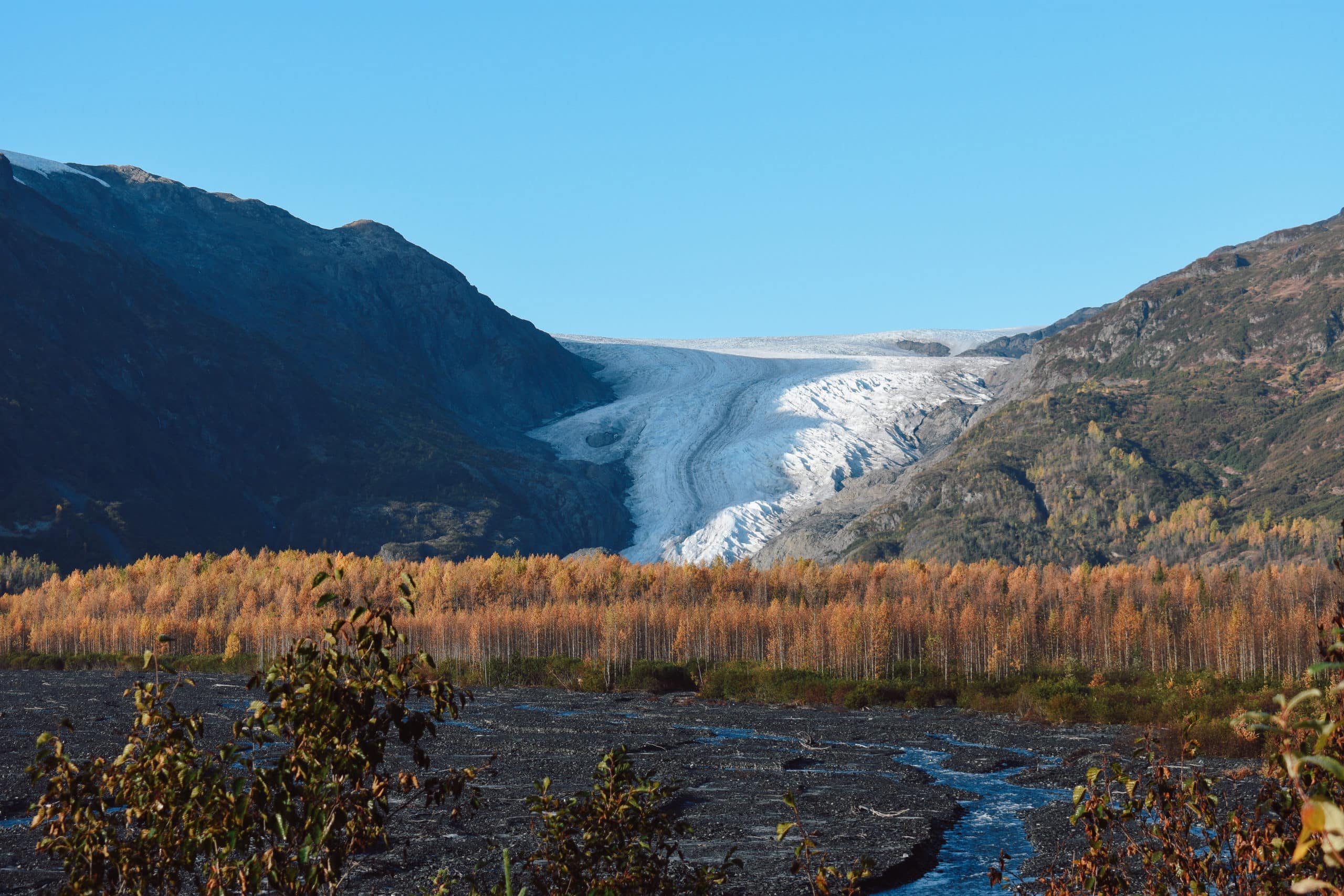
41 minutes west of Seward you will find Exit Glacier, an incredible attraction you can’t miss! To see the glacier up close, you can take the Exit Glacier Loop Trail, which is 2.2 miles. The trail is rated easy and takes an average of 60 minutes to complete.
This is a great hike with little elevation gain (308 ft). Click here for the All Trails info and be sure to check on road closures and updates to the trail here.
Exit Glacier is open year-round and has exceptional views of the Harding Icefield area. After October the road may be closed due to snow. On the trail, you can learn about how glaciers reshape a landscape, and the rate they are shrinking in the area. It was alarming to see the change from the past 100 years.
Byron Glacier
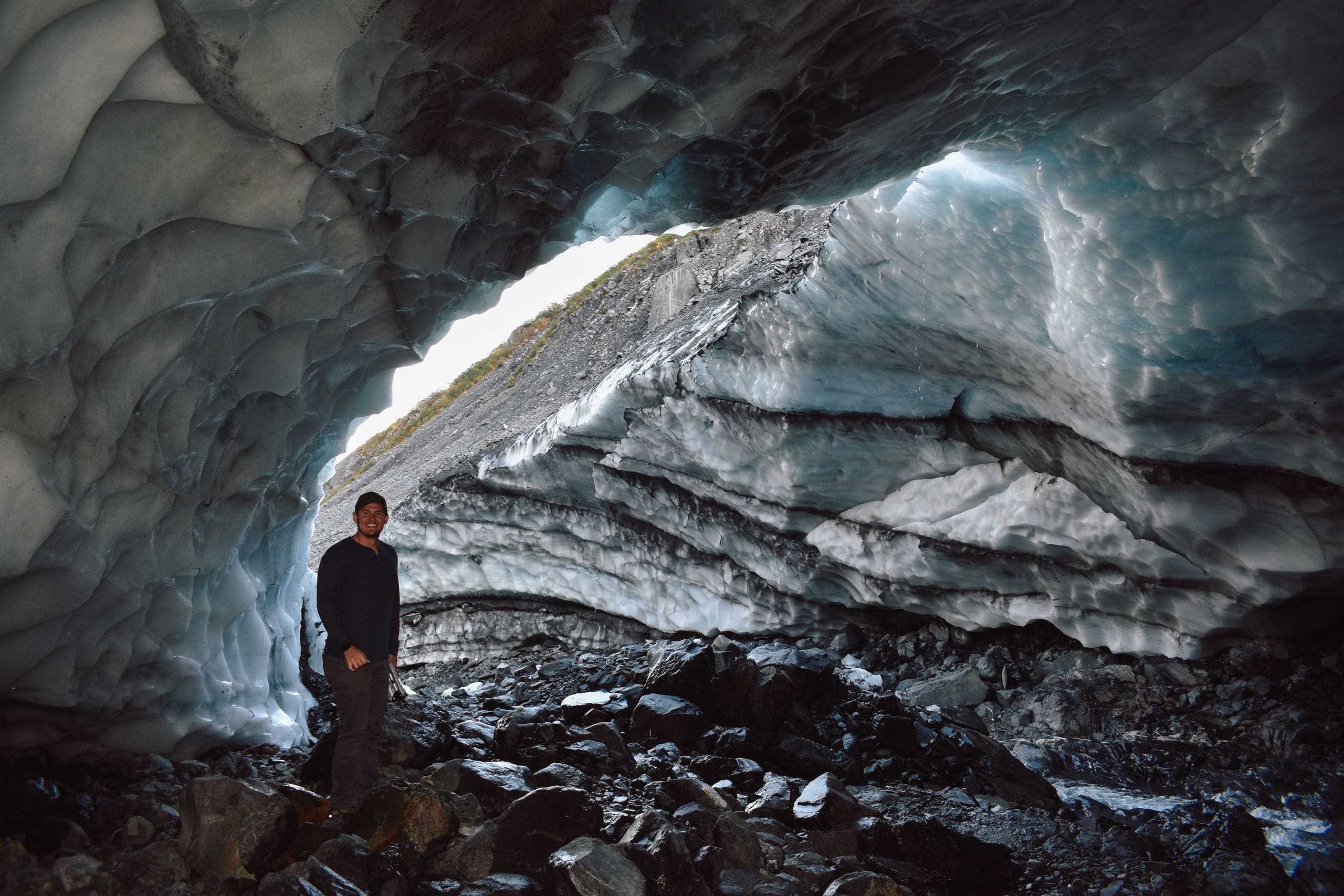
After Exit Glacier, head up to another beautiful Glacier: Byron. One of my greatest tricks to find hidden gems… search the hashtags of locations you’re visiting on Instagram. I love this hack and use it often to scroll through images and find unique spots from locals. This is how I came across Byron Glacier, and it did not disappoint!
Byron Glacier is a 3.2-mile out and back trail near Girdwood Alaska.
To see more information about the hike, visit the All Trails link here.
The best time to visit the glacier is June through October. The hike starts off walking next to a creek and brush surrounding the trail. The cottonwood/alder forest is lush and ferns sprout around you. This is a great hike for all ages, be sure to come prepared with water and appropriate clothes.
Then, further down the trail, there is a rocky section. You can cross the river on the left to see a smaller ice cave (don’t confuse this as Byron Glacier). Or, you can boulder through the large rocks, and further up the trail you will come to Byron Glacier.
There are a few access points, and be sure to take caution when entering an ice cave.

We explored the outside and saw gorgeous blue ice formations. Inside the cave, you can see these ice-blue tints all over the walls.
It is absolutely breathtaking! Grab some photos and make your way back down the trailhead. You will see the Portage Valley as you make your way to the parking lot.
The blue ice caves and gorgeous Alaskan Landscape made this a MUST-SEE.
Alaska Wildlife Conservation Center
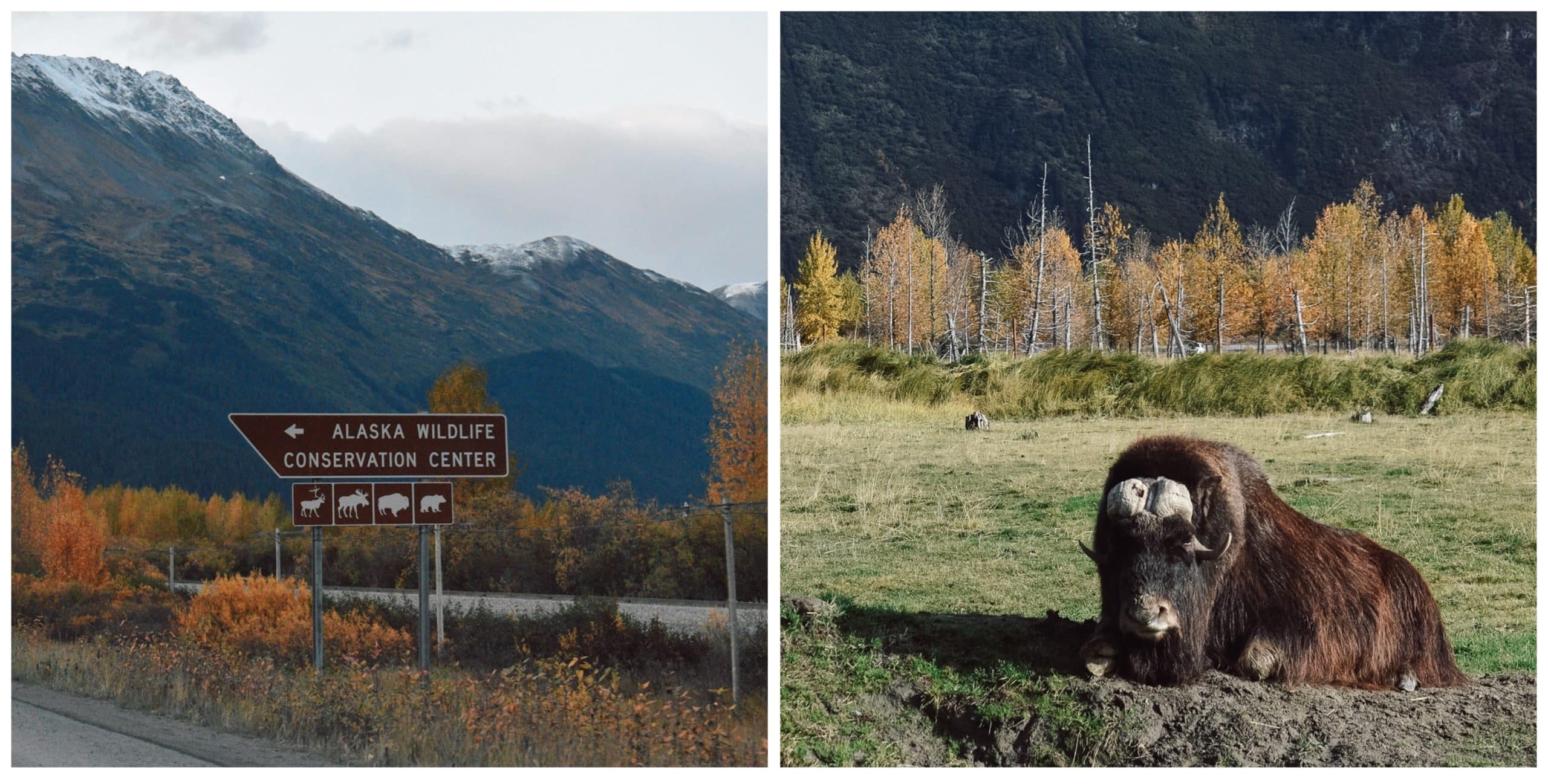
Before Byron Glacier, there is a turn for The Alaska Wildlife Conservation Center. You can plan to visit before or after Byron Glacier.
We decided to go after to have plenty of time at the glacier. The center is located on about 200 acres at the entrance to the Portage Valley.
The sanctuary is dedicated to preserving Alaska’s wildlife through conservation, education, research, and quality animal care. This is a great stop to see the local animals like Black and Brown Bears, Muskox, Moose, Wolves, Caribou, etc. You can purchase tickets at the center, which are under $20 each.
Walk around the center and see the incredible native animals. This is a great sport to see a Brown Bear from a safe distance. (Would much rather see one here than on one of the hikes).
After the Conservation Center, we made our way to an Airbnb in Anchorage. To see our Day 2 and 3 Airbnb stay, click here, it was about $125.00 for two nights. It will add some drive time, so if you want to avoid this you can find a stay in Girdwood, Whittier, or another surrounding town.
Day 3: (Whittier, Girdwood, Potter Marsh)
Whittier
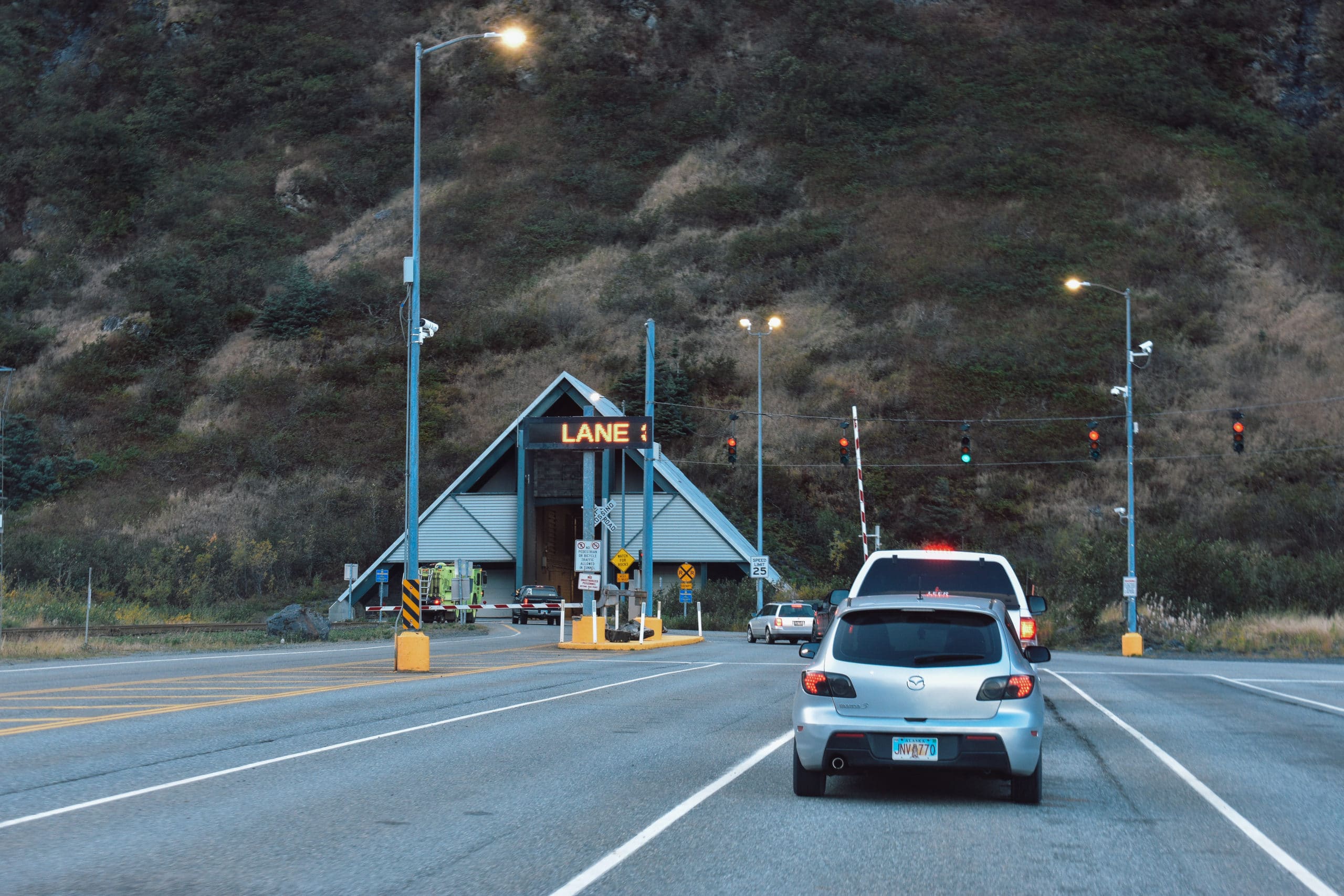
Whittier is the entrance to Prince William Sound, a stunning destination that attracts thousands of visitors every year.
The town can be accessed through the one-lane Anton Anderson Memorial Tunnel. There is a regulated schedule for driving through the tunnel so be sure to check times for traffic going in and out to plan your trip accordingly.
On the other side is a gorgeous seaside town. Here you can take incredible glacier tours (end late September). Whittier is known for the world’s largest concentration of tidewater glaciers. You can see whales, sea otters, and seals surrounding Prince William Sound.
In October, there were hardly any crowds and we were able to explore the quiet streets. Our fish and chips lunch while peering out the restaurant window is a memory I won’t forget! You can spend one day or more here based on your travel plans.
For a longer stay, go sea kayaking, ride Jet Skis, or explore the local trails. After Whittier, head to Girdwood and Potter Marsh, before spending night 3 in Anchorage.
Girdwood
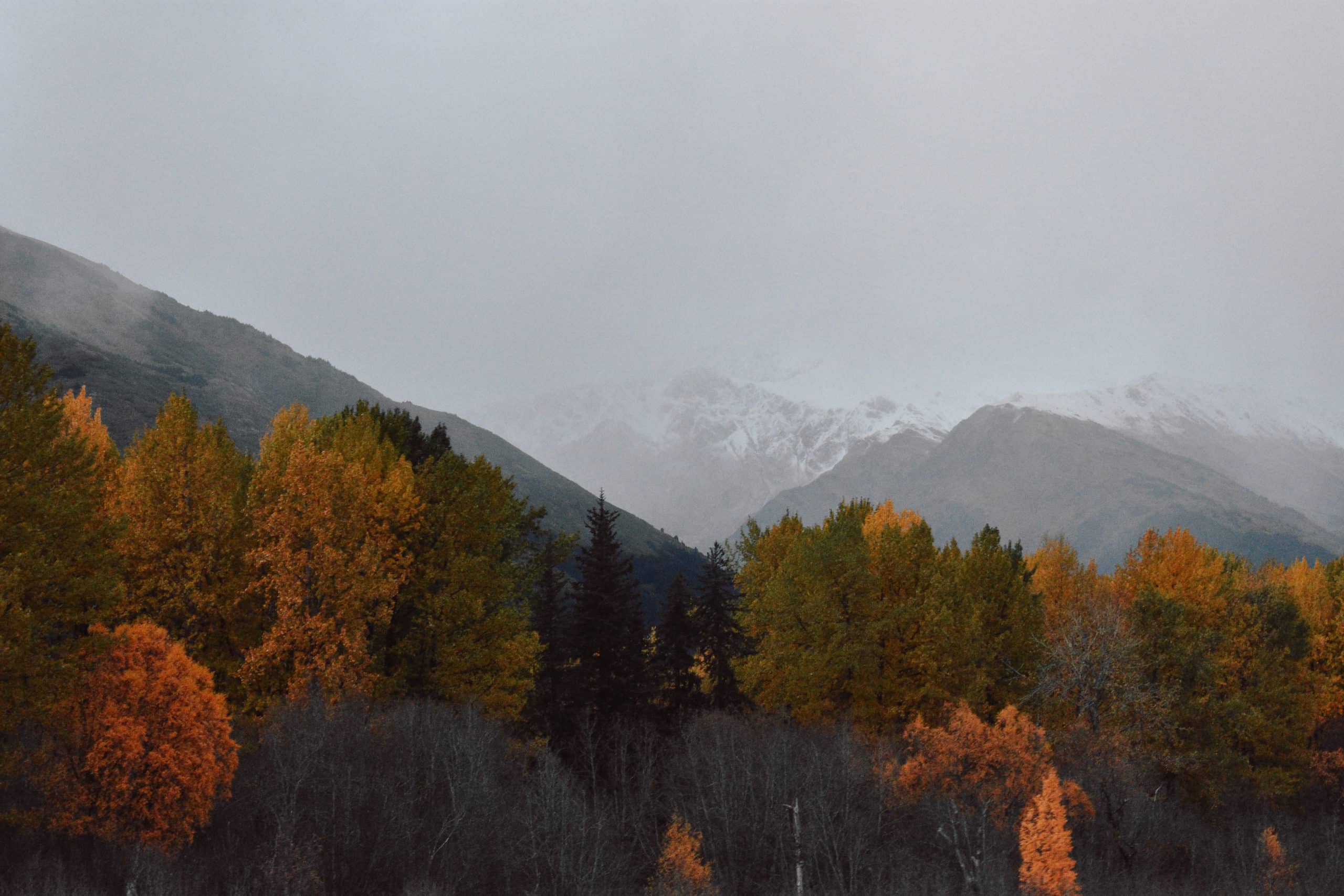
Girdwood is known for being “One of the 10 Most Beautiful Towns in Alaska” and for the Alyeska Ski Resort.
This area offers something for everyone! From biking, skiing, rafting, hiking, gold panning, fishing, and more, there will be something for anyone to enjoy. If I could re-do our trip, I would plan on Day 2 spending the night somewhere in Girdwood, so this is your chance to learn from our mistake!
Girdwood is only 10 miles from Prince William Sound and the Kenai River.
As a resort town, prices may be slightly higher, but there will be many unique restaurants and opportunities available. If you take the Alyeska Tram, you can have incredible views of the area and visit the Seven Glaciers Restaurant on the top of Mount Alyeska. We made a quick stop here and enjoyed some local ice cream, but I definitely recommend a longer stay!
Potter Marsh
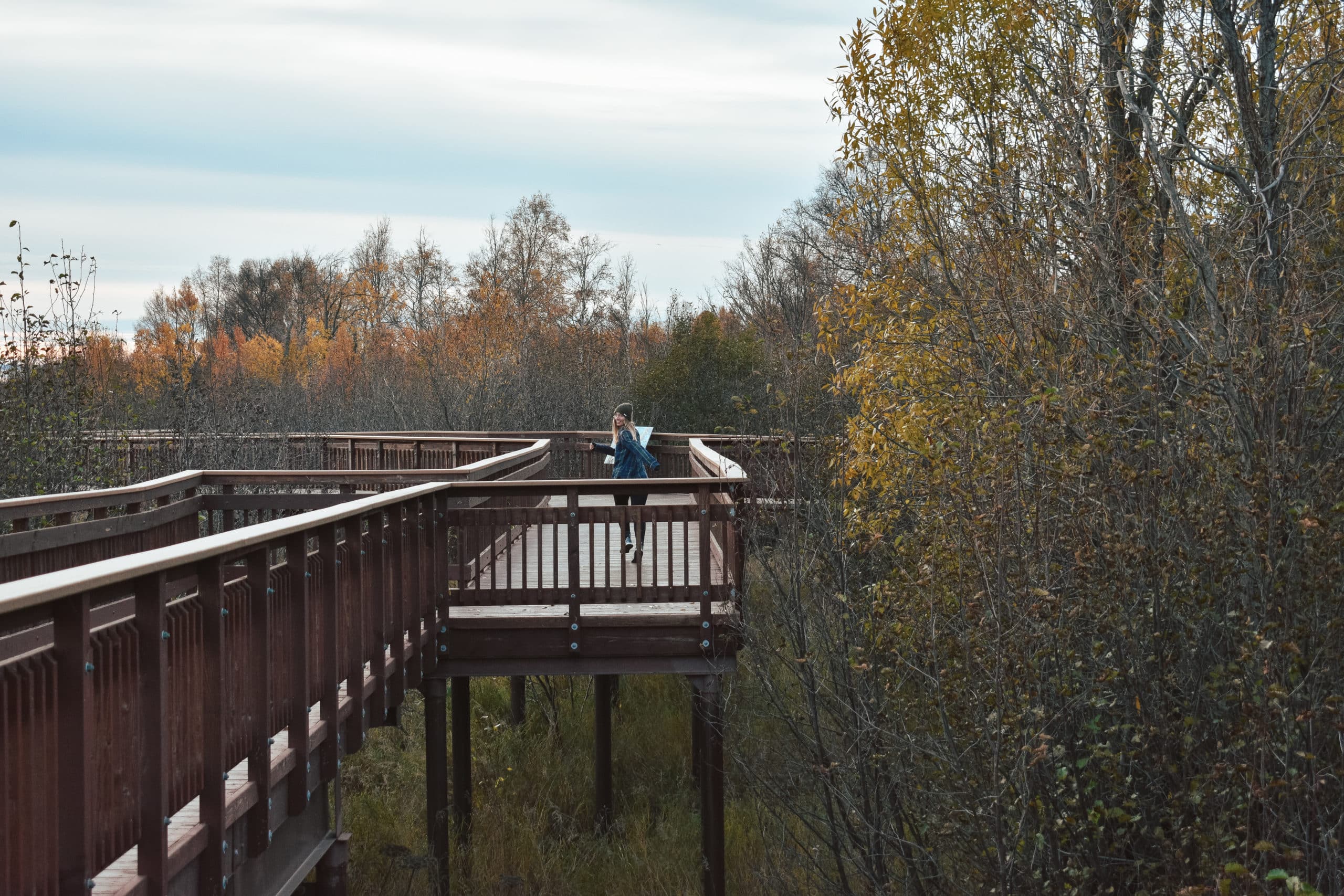
Potter Marsh is a fun stop to view more local wildlife, especially a variety of bird species.
The wooden boardwalk spreads 1,550 feet from the parking lot to the marsh. When you reach the marsh, you will have stunning views of Turnagain Arm and the surrounding mountain range.
Spy a variety of birds like northern harriers, canvasback ducks, red-necked phalaropes, northern pintails, Canada geese, and more!
This is a great location to use binoculars and try to spot eagle’s nests in the trees around the marsh.
Along with the birds, you may spot muskrats or moose that frequent the area (May to June are the best times to see them here). Rabbit Creek from May to August is a great place to see spawning salmon.
Remember that fishing is prohibited here and leave no trace of trash, just take memories and pictures.
Day 4: (Eagle River Nature Center, Fly Home)
Eagle River Nature Center
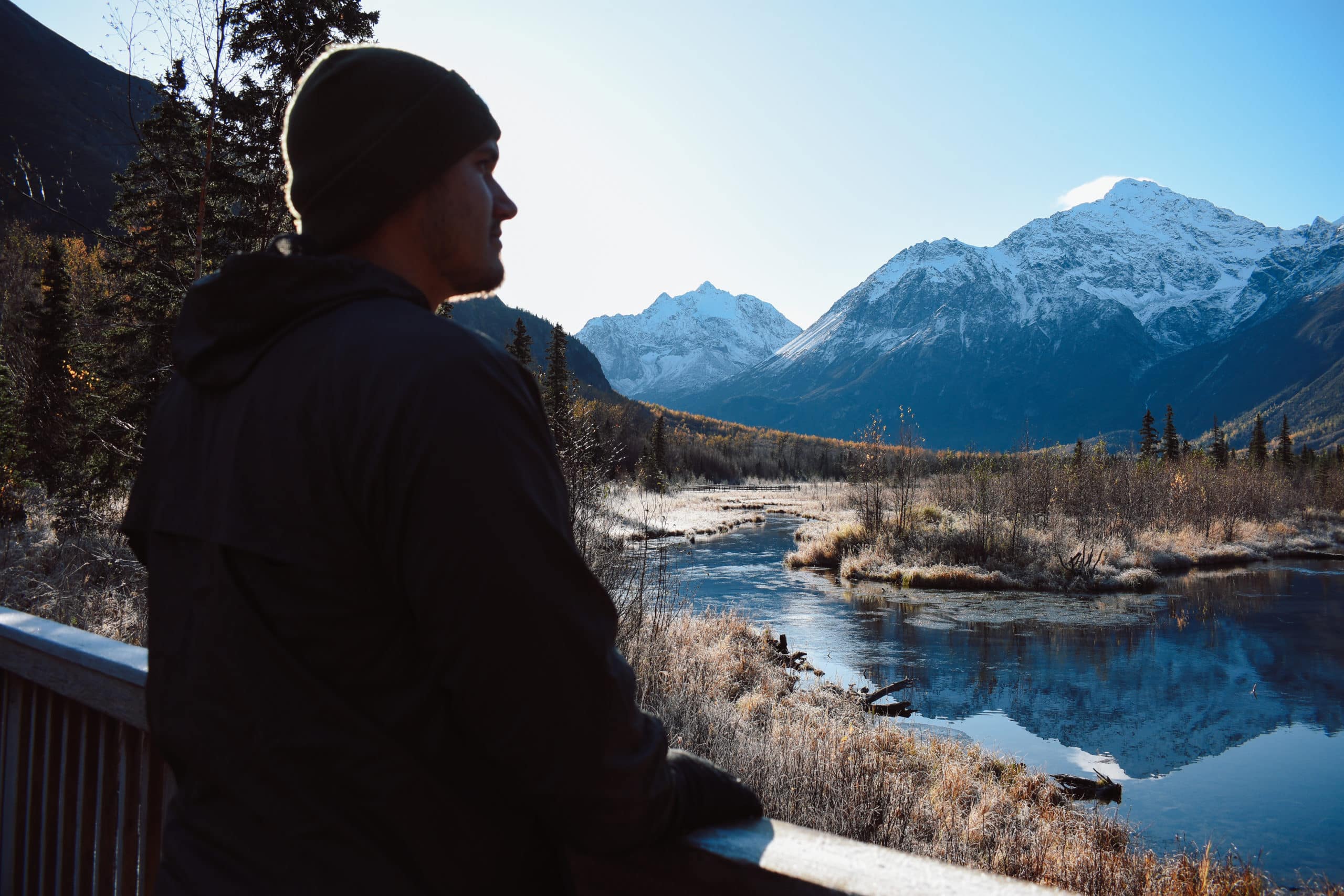
Eagle River Valley is a breathtaking location where visitors can hike and view more local wildlife.
Drive down to the Log Cabin Nature Center to start your visit. Here you can learn about the surrounding area and glacier-carved mountains. Check their signs for updates on open/ closed trails. Rangers track bear activity and will let you know if the trail is safe, or if there are active bears in the area.
Eagle River Valley has been called a “Miniature Yosemite” with trails for the beginner to advanced. When we arrived, the center was closed, but we were still able to access the trails. We took the Rodak Nature Trail, which is a short ¾-mile loop with gorgeous views.
While walking to the Salmon Viewing Deck, were surprised by a Moose heading towards us on the trail! It was a large Bull Moose and we knew right away, that we needed to take safety precautions.
We moved slowly but deliberately up the hill on our right, put some trees between us, and thankfully the moose continued past us on the trail, looking unbothered by our presence.
On any trail, you are entering the local wildlife’s home. Please be respectful and smart to have a safe experience.
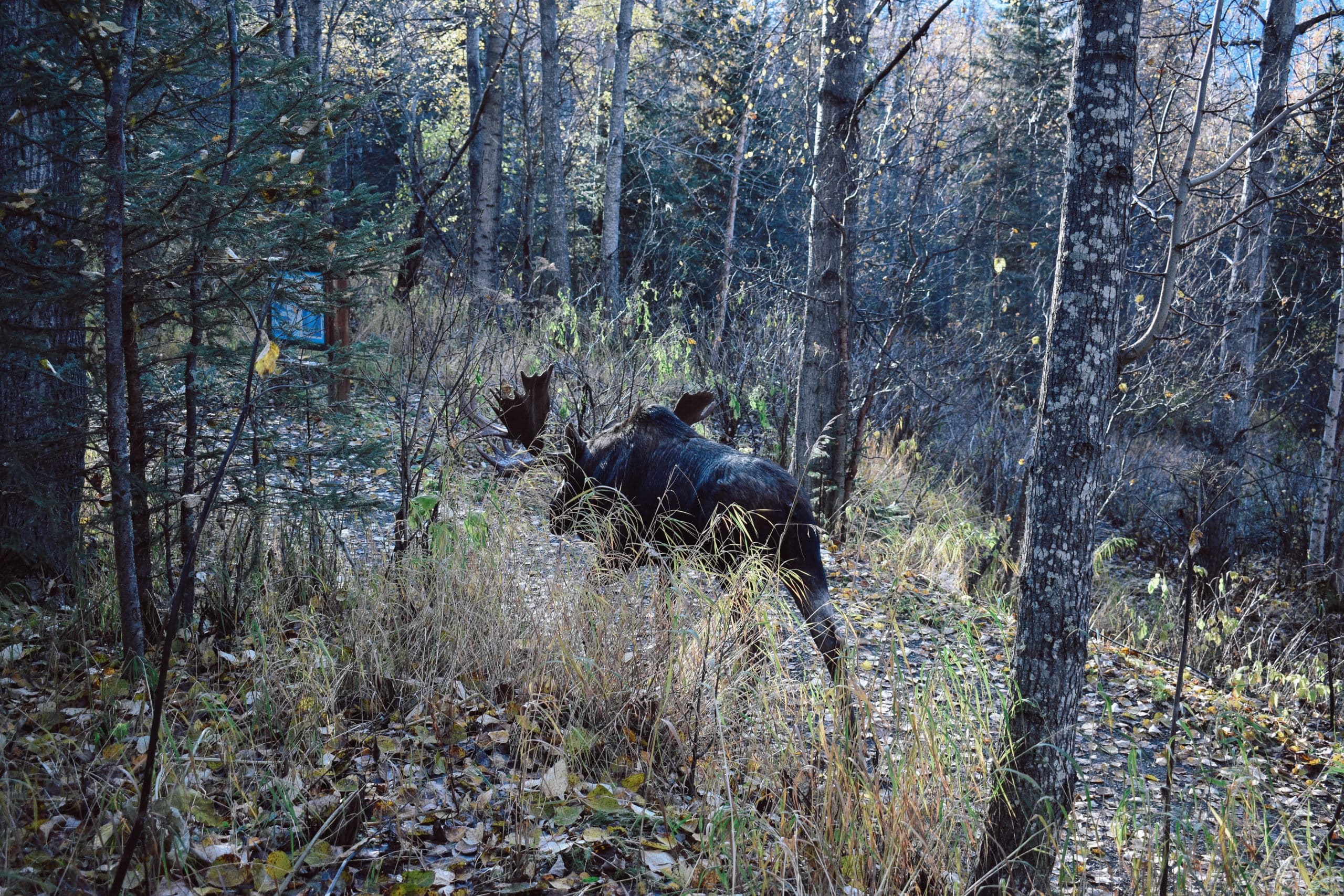
At the viewing deck, we knew we were too late in October for the Salmon Run, (best during summer), but this didn’t lessen the experience.
This area is jaw-dropping and well worth the visit. After visiting Eagle Valley River, you can explore more before your flight, or make your way to the airport.
We hope you liked this guide on what to do on your drive from Anchorage to Seward Alaska!
For another Alaskan Itinerary, check out our blog post for Ketchikan here
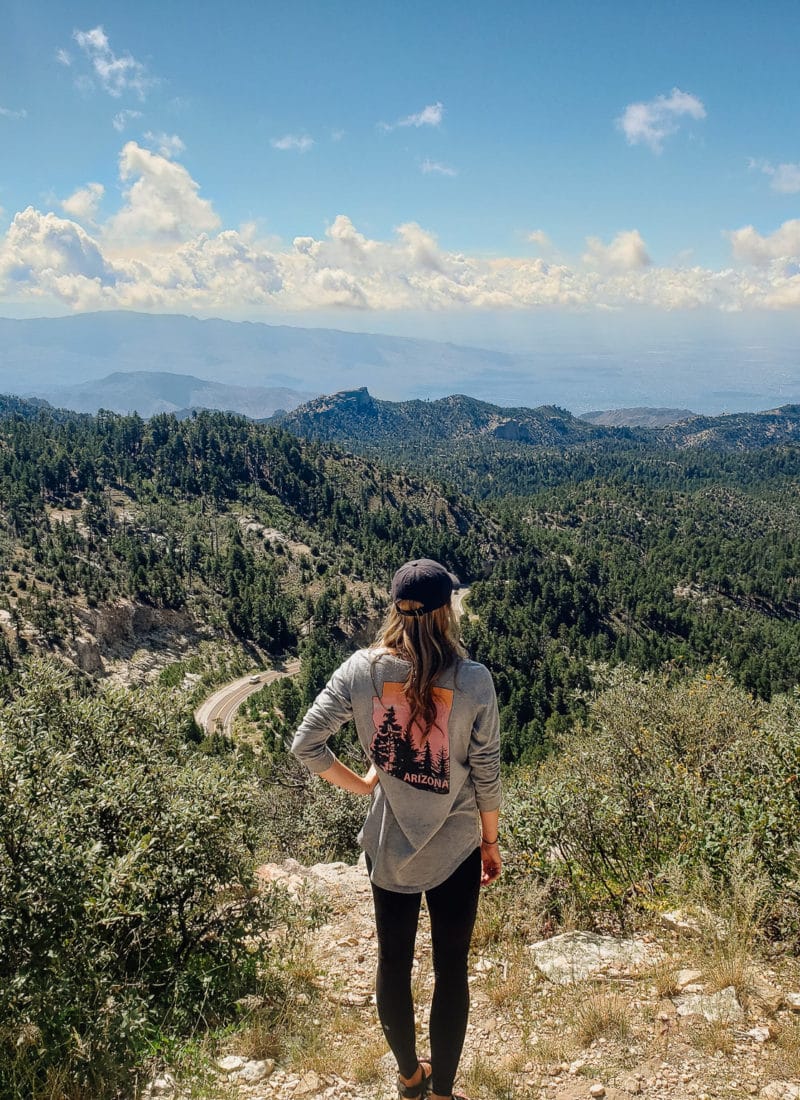
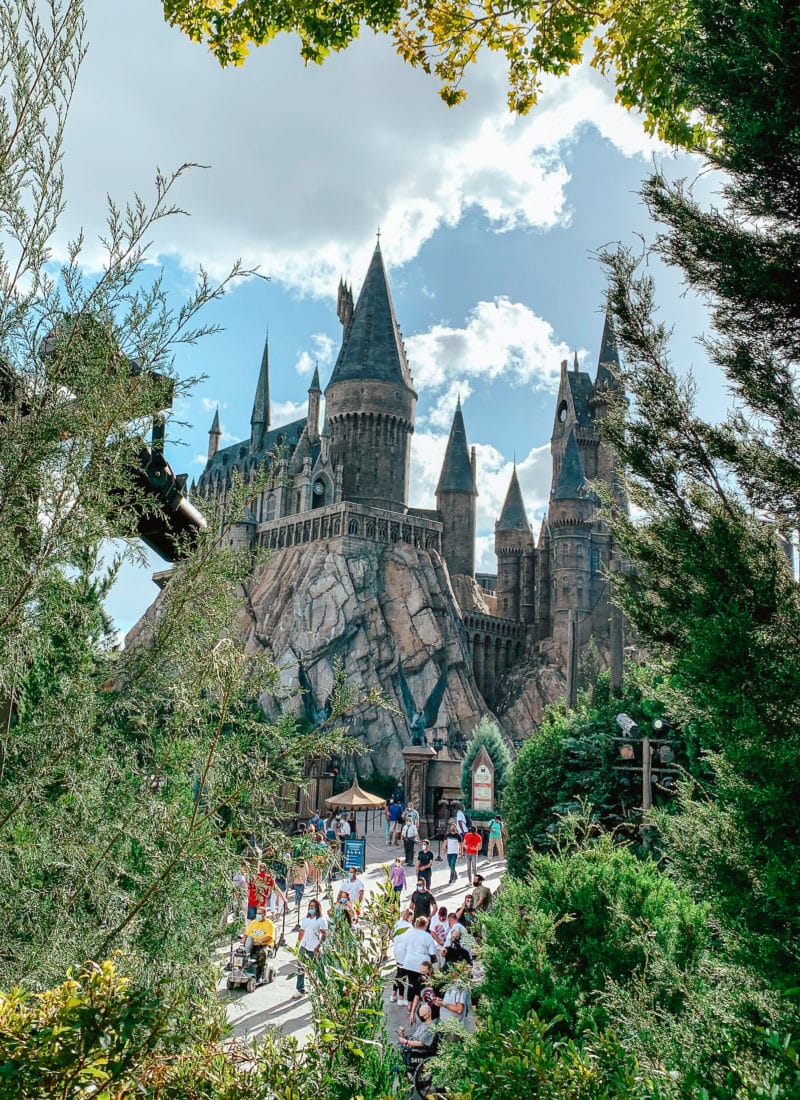
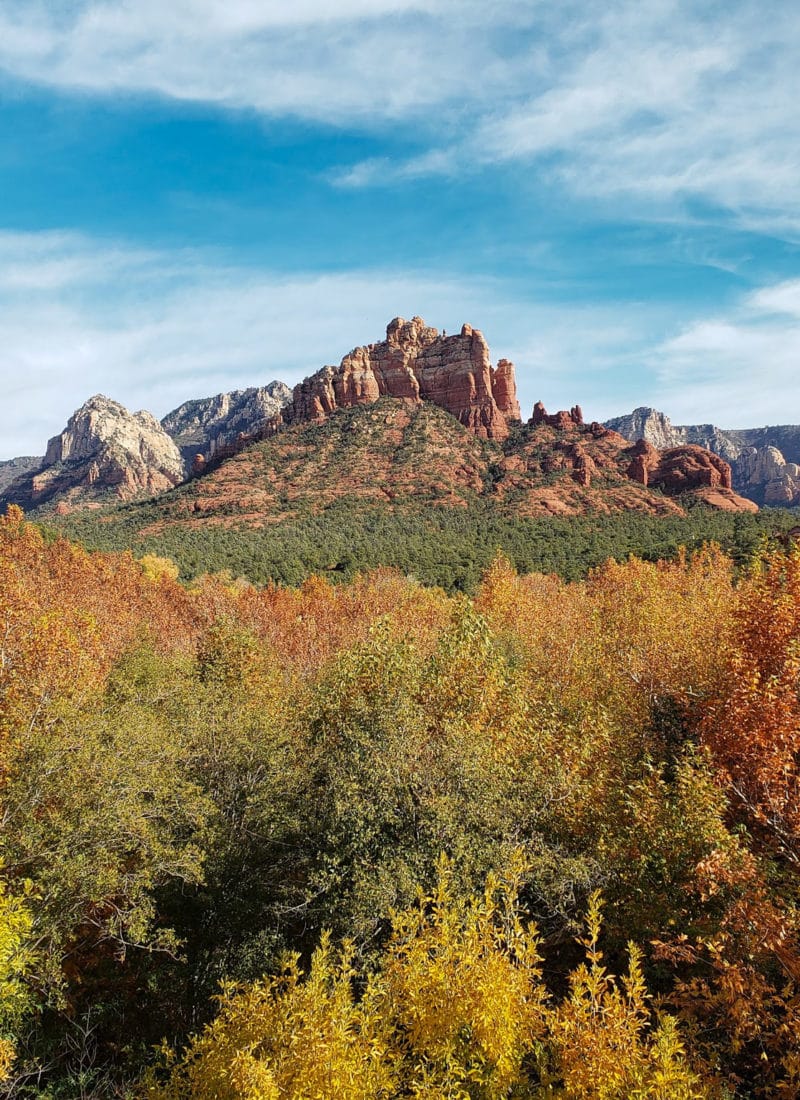

Leave a Reply